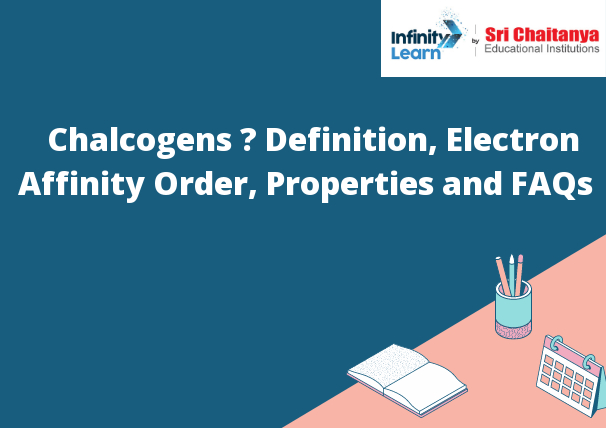Table of Contents
What are Chalcogens?
Chalcogens – Definition: The chalcogens are a group of six chemical elements in the periodic table. They are: oxygen (O), sulfur (S), selenium (Se), tellurium (Te), polonium (Po), and livermorium (Lv). These elements are all located in the periodic table column called the “chalcogens.” They are all relatively reactive and share some common chemical properties.

Electron Affinity Order of Chalcogens
The order of electron affinity for the chalcogens is: sulfur, selenium, tellurium, polonium, and oxygen. This order reflects the increasing tendency of the chalcogens to attract electrons to themselves.
Physical Properties of Chalcogens
- The physical properties of chalcogens depend on the number of valence electrons in their atoms. Sulfur (S) has six valence electrons, and oxygen (O) has eight. The other chalcogens have 10 valence electrons.
- Sulfur is a solid at room temperature, with a yellow color. It is a good conductor of electricity and is used in batteries. Sulfur is also a component of oil and gas, and is used to make sulfuric acid.
- Oxygen is a gas at room temperature, and is a colorless, odorless gas. Oxygen is a very good conductor of electricity. It is used in the manufacture of steel, and is a component of water.
- The other chalcogens are also solids at room temperature. They are all poor conductors of electricity.
Chemical Properties of the Chalcogens
- The chalcogens are a group of elements in the periodic table that includes sulfur, selenium, tellurium, and polonium. They are characterized by their relatively low electronegativity and their ability to form covalent bonds with other atoms. Chalcogens are also highly reactive due to their high oxidation states. They are often found in minerals and ores, and they are used in a variety of industrial applications.
- The chalcogens are a group of elements in the periodic table that includes sulfur, selenium, tellurium, and polonium. They are all located in group 16 and have similar chemical properties. Chalcogens are all nonmetals and are very reactive. They all form compounds with oxygen and have a valence of +6.
- Sulfur is the most common chalcogen and is found in many different forms. It is a bright yellow solid that is very reactive. Sulfur is used in many different industries, including the production of sulfuric acid.
- Selenium is a silver-white metal that is very reactive. It is used in the production of selenium dioxide, which is used in the production of photographic plates.
- Tellurium is a silver-white metal that is very reactive. It is used in the production of tellurium dioxide, which is used in the production of solar cells.
- Polonium is a radioactive element that is very reactive. It is used in the production of polonium 210, which is used in the production of nuclear weapons.






